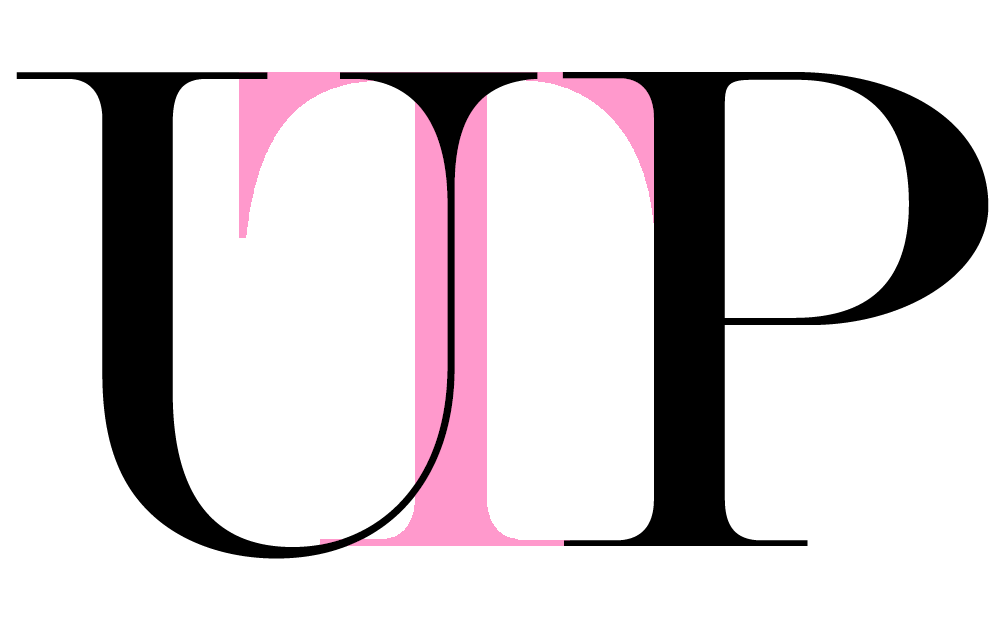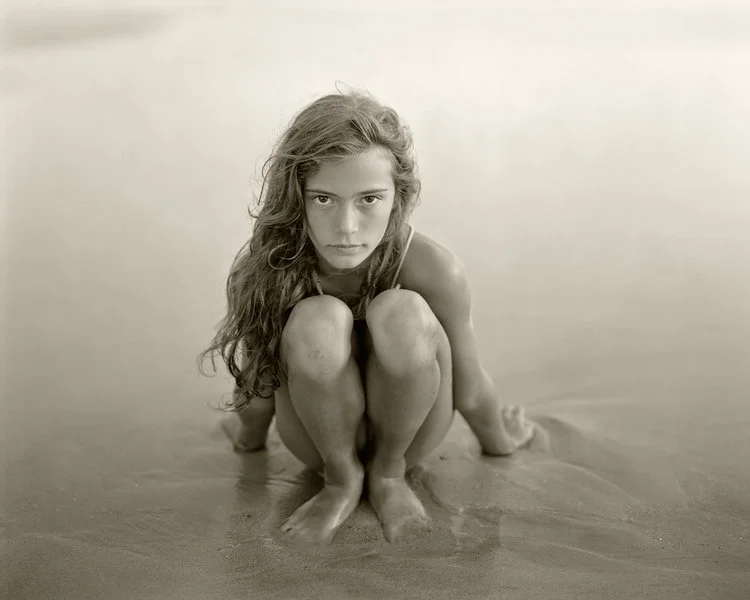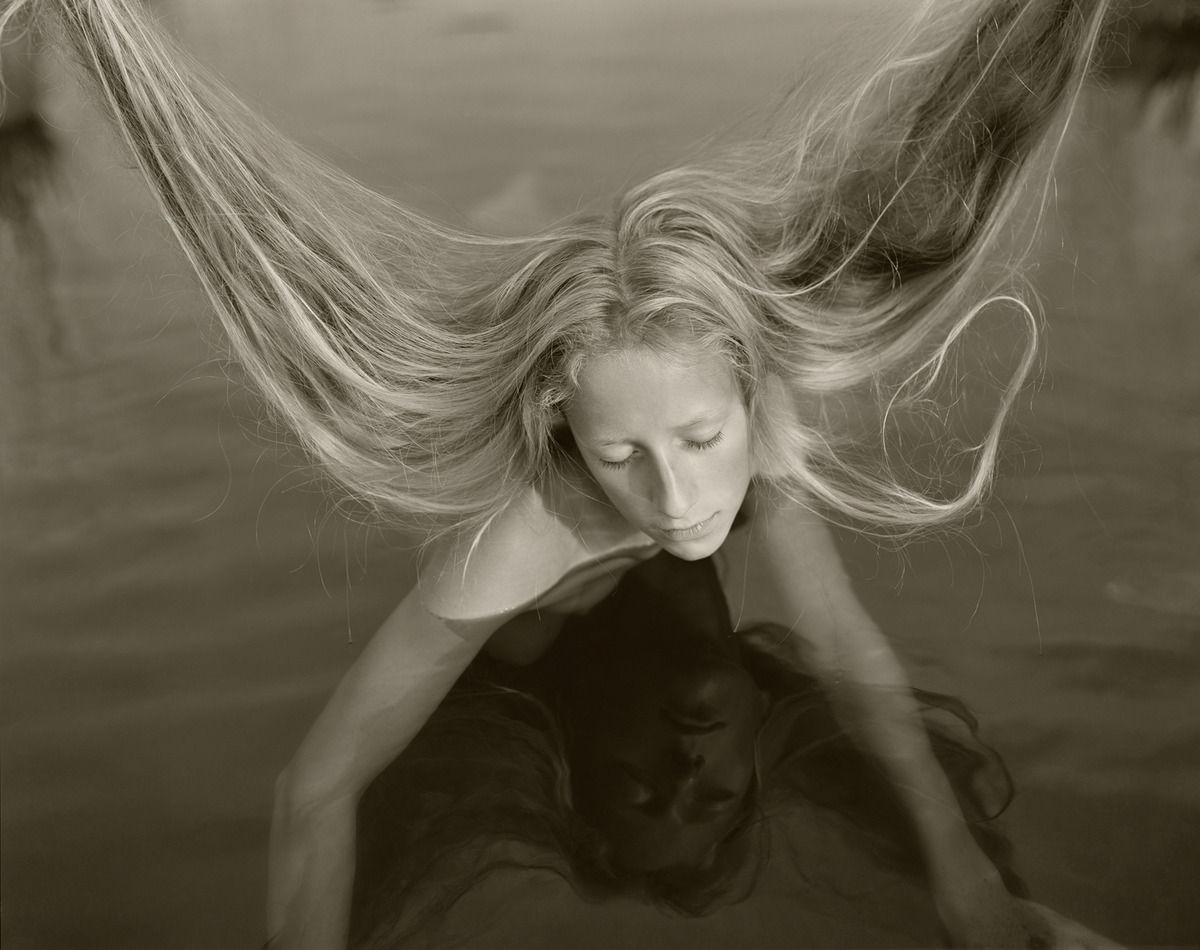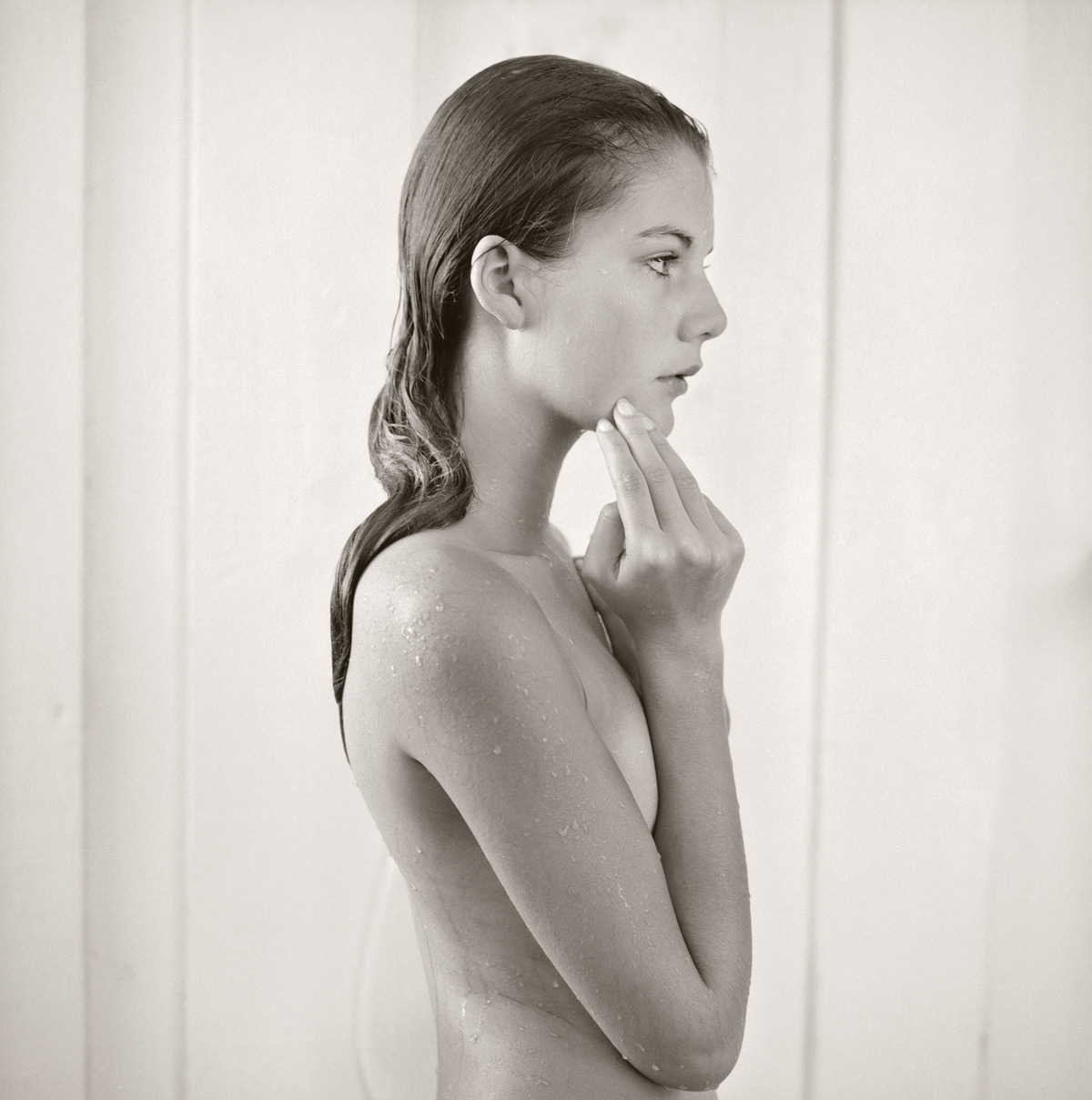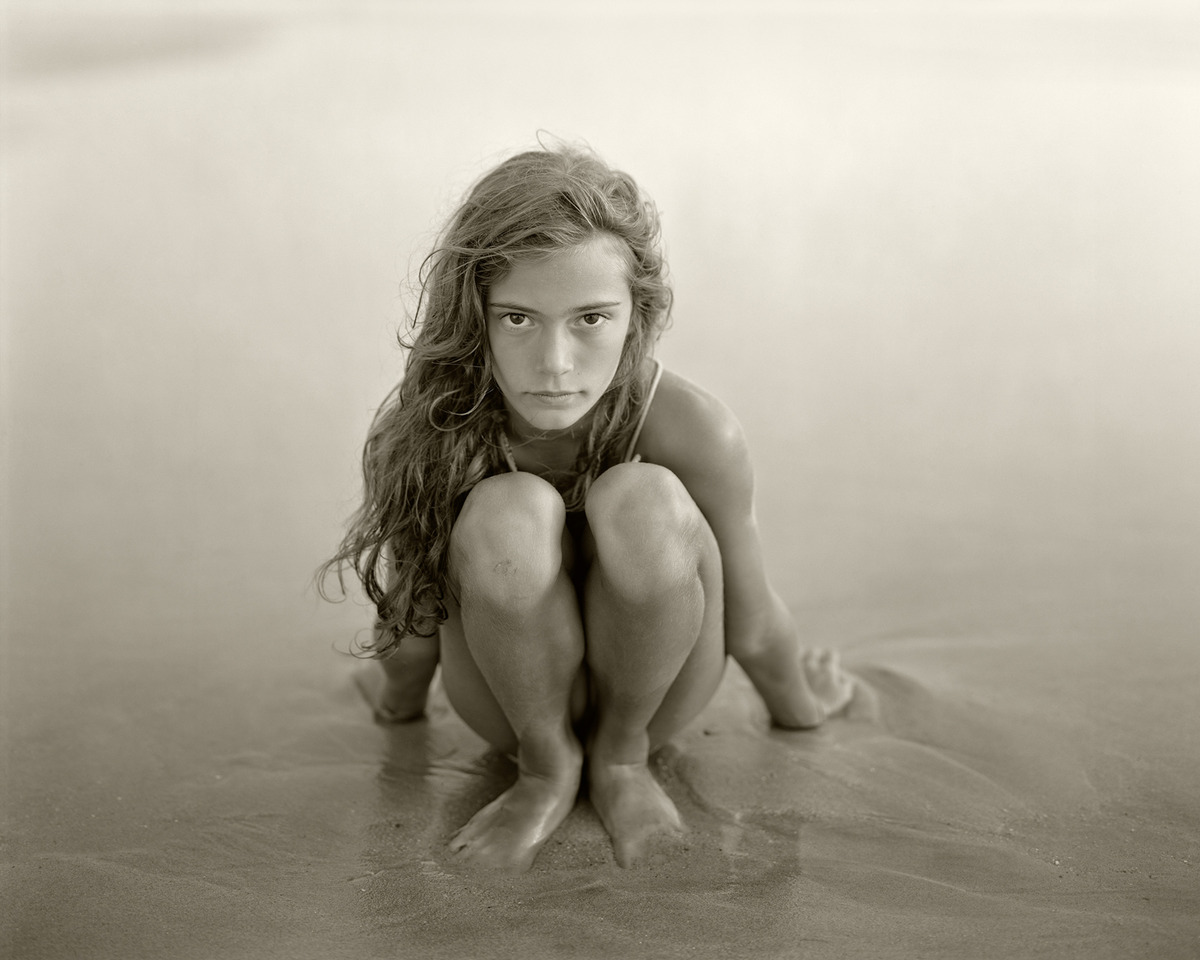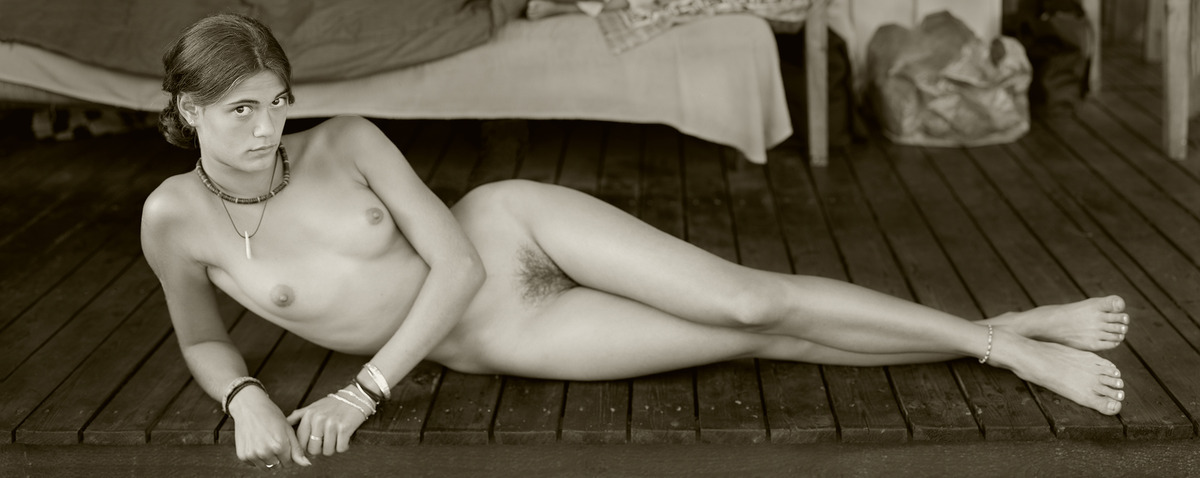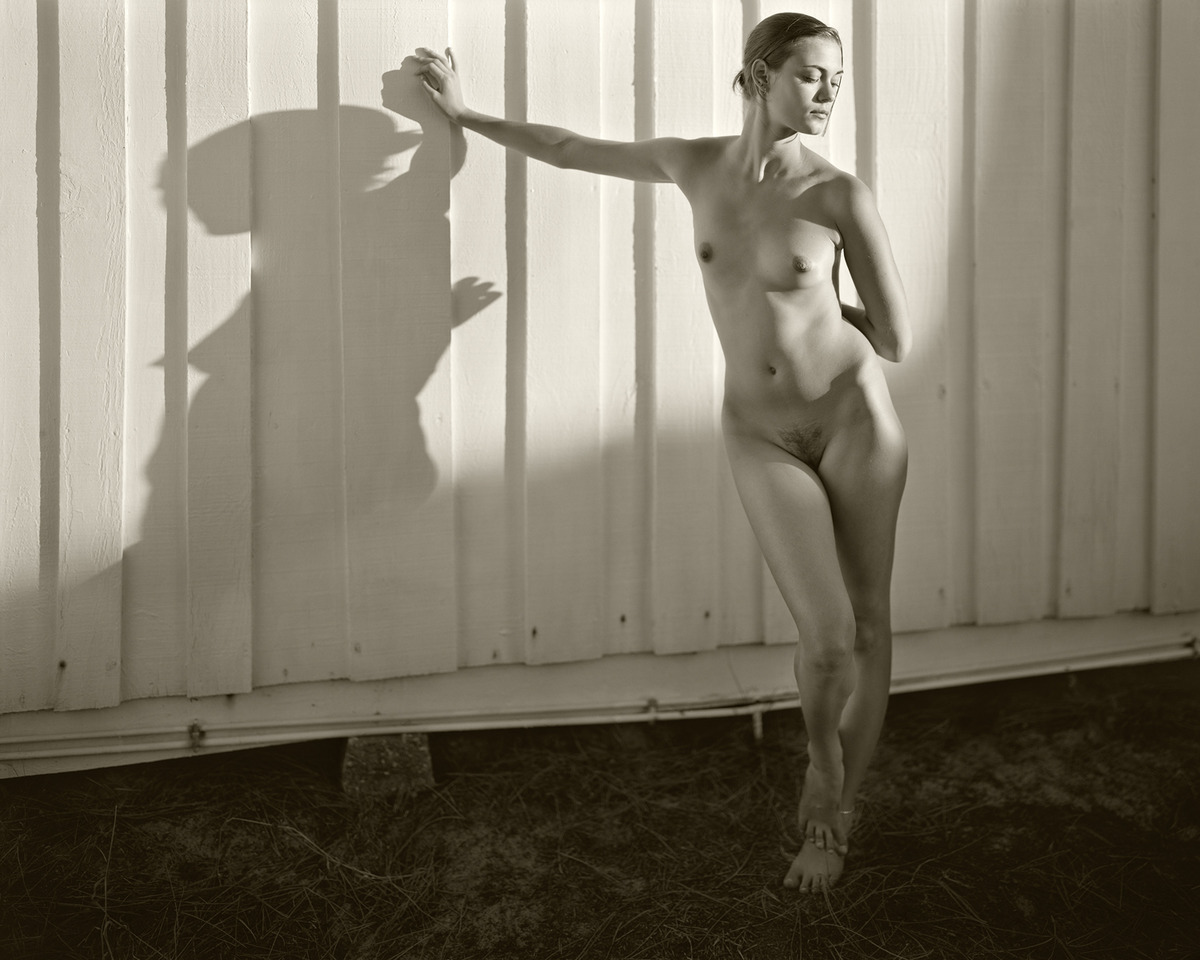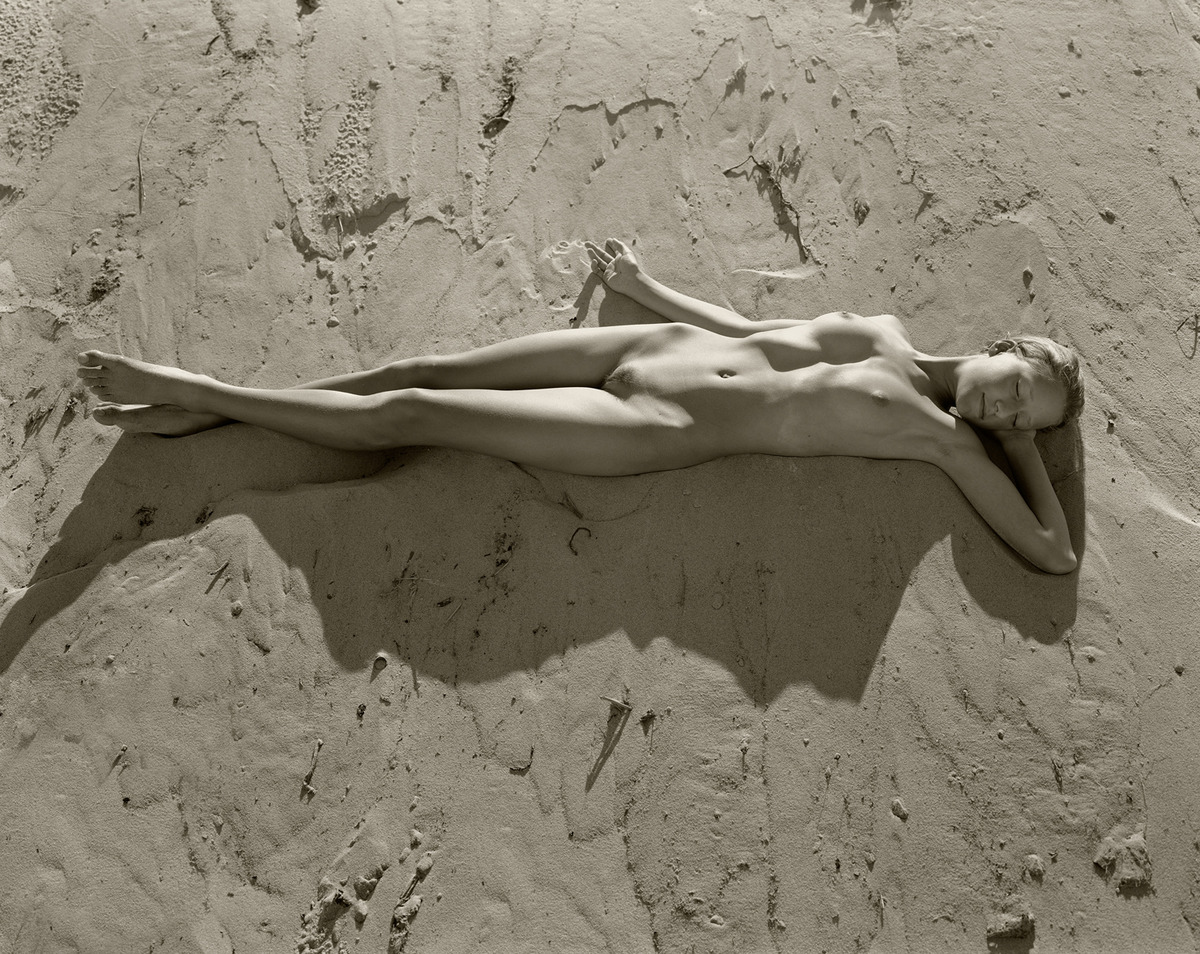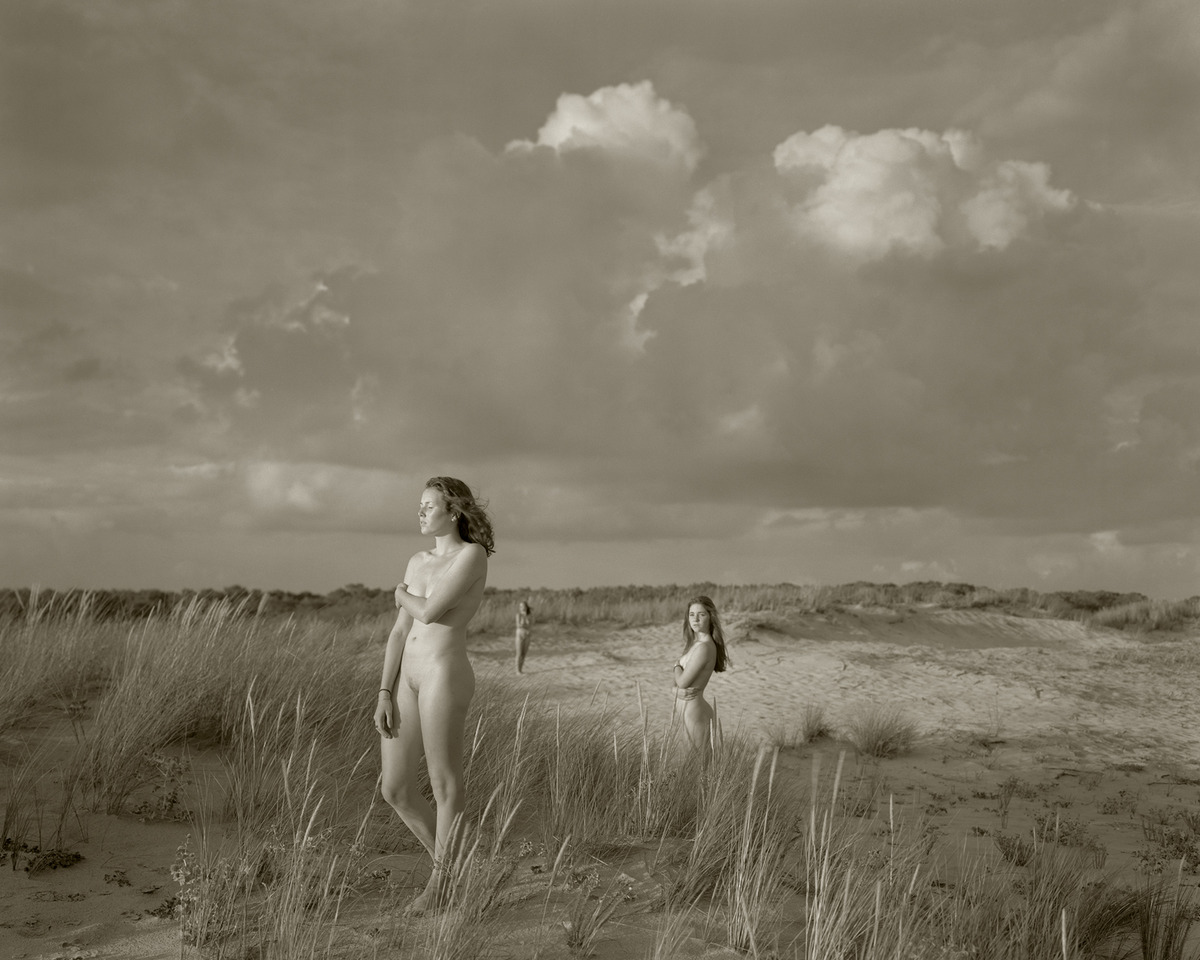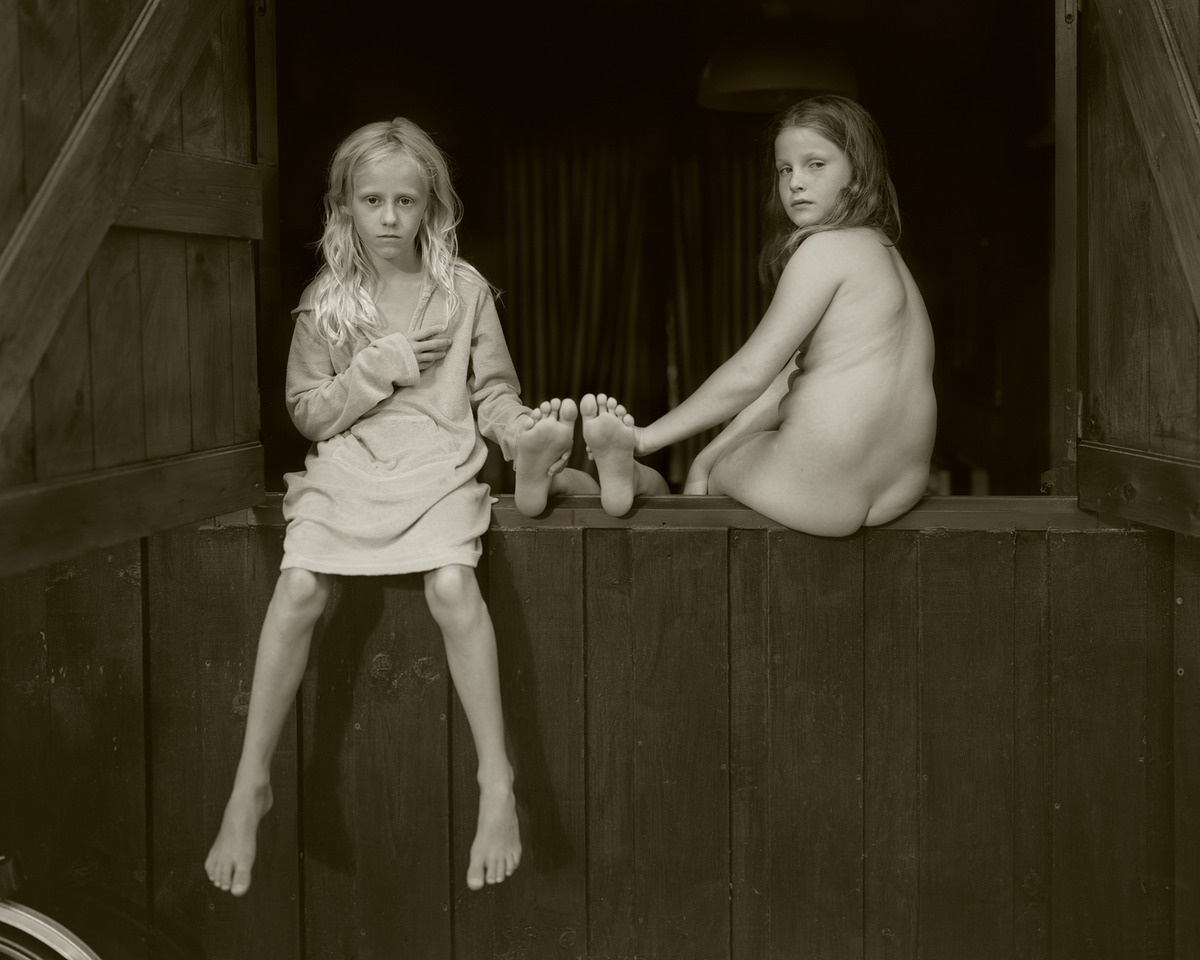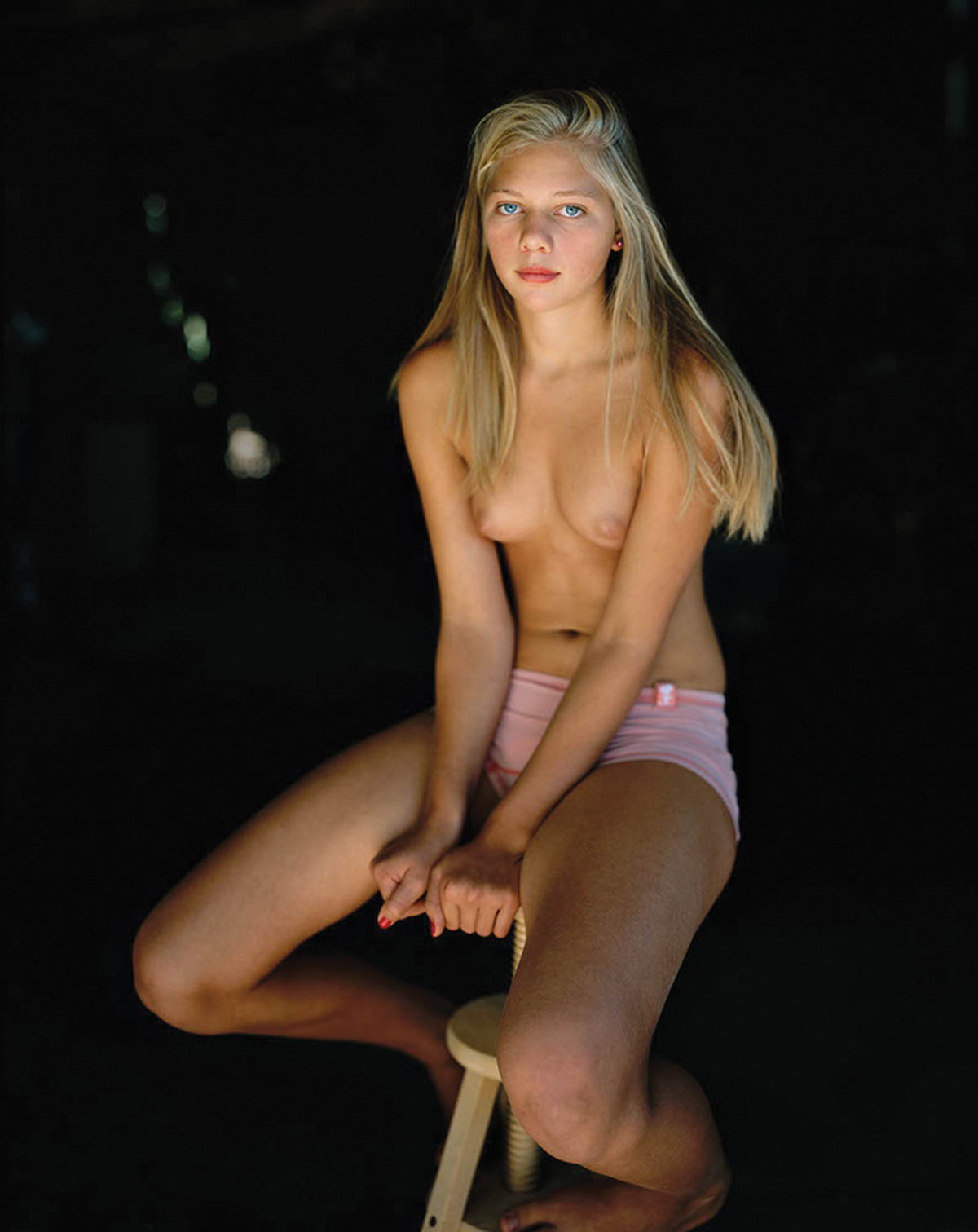Jock Sturges
Sturges’ ability to capture unstudied, un-posed, natural gestures is remarkable. His photography conveys a quiet warmth and beauty, creating moments of true peace. He prides himself on the bonds of trust, friendship and collaboration between the photographer and model. The admiration and respect he shows for his subjects shines loudly through his works.
Sturges shared a note he recently received from one of his models, Eva (below). It’s a glimpse into Eva’s memory from the day of the photoshoot; along with her thoughts on the image today. It shows the respect Sturges has for his subjects is one of mutual admiration.
“Thanks for pulling out the image of me that one of your friends beautifully described as the ‘water spider’ image; it made my day! I was scrolling through the Facebook timeline inattentively when BAM, all of a sudden I saw my own face. I find it hard to describe what exactly struck me so much, but honestly, it made me tear up a bit. Maybe it was the serenity of my own face, or the remembrance of a time in my life that, now that I look back at it, felt so warm and peaceful – the day this picture was taken, especially. It also could be that I was struck by seeing how beautiful I look, something that I don’t really see in myself in daily life. I also just haven’t seen this picture in a while. All the pictures hanging in my parents’ house I know very well; I can dream them with my eyes closed. But the vast majority of the pictures you took, are not hanging up on the walls to see all the time. They are carefully filed in the albums my mother made. So maybe it was the shock of running into ‘someone’ I know very well, but haven’t seen in a long time. But I think that is just the beauty of the photographic medium. Aside from the personal memories and feelings attached to it, it is just a marvelous piece of art (and that is coming from a graduated art historian! ) The light on my face and hair, the super strange composition, the soft tones, the balance between my stretched arms and held up hair, which is then subtly broken by the falling strand of hair – giving the image a certain liveliness that makes it look as if I could just open my eyes, stand up and move on. Mysterious! I could daydream about this endlessly.”
Dennis: When did your passion for photography first begin?
Jock: At about age 7. One of my older brothers had been given a good, folding Polaroid for Christmas and I was fascinated by it both as a machine and as means of keeping people. That was the very beginning of it for me. My intent and strategies would deepen shortly thereafter in the boys boarding schools and summer camps I would attend from age 8 on.
You first took nudes when you were about 22 years old, but then stopped for almost 10 years after taking a feminist workshop. What made you return to working with nudes and what role does Feminism play in your work today?
To this day I consider my luck in finding myself in that workshop one of the most important and useful accidents of my education. I was in Minneapolis/St. Paul doing a month-long workshop on alternative education when the organizers bounced us into a short feminist workshop just to mix things up. I was fresh out of the Navy and pretty ignorant of most aspects of feminist thought so I was taken largely by surprise - but in a good way! The whole notion of pictures doing harm because of their tendency to objectify was a new thought for me. The experience also helped me understand that my motives in doing the few nudes I was then doing were largely hormonal as opposed to intellectually defensible. Years later the American critic, Alan Coleman would describe me as having a strong feminine aspect. That thought struck a chord with me not least of all because it went a long way towards helping me understand why feminism had so easily become such an important influence on my thinking earlier on.
In fact, I like the women I photograph – not just because they are the opposite sex, but because the conversation to be had with them is much more interesting to me than discussions full of repartee and cars and sports. Reading this should make it easier to understand why it is of such importance to me that the photographs be at least as valuable to the models as they are to me. To borrow from Hippocrates, I want to do more than no harm. I want the work to be a reifying, positive good in the lives of my subjects.
What are the elements you desire to make the ideal photograph?
In descending order of importance, relationship, relationship, relationship followed by good light and a useful ground. It has, as well, to be the right moment for us both, model and photographer.
Tell me a bit about what inspires you?
Painting, sculpture, good music, good literature, and, a distant fourth, photography. Looking at the work I like in paint is the pinnacle art experience for me. I am fascinated by the well-balanced and descriptive precision of the Bruegel’s, by the true if sometimes bitter line of Egon Schiele’s portraits and nudes, by the arrogant eloquence of the young Picasso, by Francis Bacon’s massive success in expressing a hideous self, by the Chauvet cave paintings in the Ardéche, by Velázquez and Dürer and Goya, by John Singer Sargent when he was painting people he liked, by the audacity of Delacroix. I love Faulkner, Nabokov, Mark Helprin, William Vollmann, Tom Robbins, Prokofiev, Benjamin Britten, Mahler, Dvorak, The Roche Sisters, Tesla, Sally Mann and Alain Laboile. In fact, this list is almost pointless because it is so vastly incomplete. I will just say this: as in all the arts, photographic art manifests the mind behind it. The more one knows (and loves!), the more eloquent the work resulting.
The theme of this issue is based around Nature and Naturalism. What role does nature play in your work?
My best pictures derive from the real. I see someone doing something that is unstudied, un-posed, just a natural gesture/posture if you will, and that is where I find my image. The less I have had to do with what happens, the better. For me it is the natural, the awkward grace of simply being human that attracts me most. I love looking at an image and being able to say, “I could never have thought of that!” I prefer to work in the natural world whenever possible. It is my ambition to work with the nude in a natural setting where location and the lack of costume work to obscure the date, the era, time itself. The hope is to make pictures that somehow access essential human truths suspended in time. That aims a little high, I know, but better too much ambition than not enough…
Your art often consists of making portraits of people over a long period of time. One beautiful example of this is the series of Fanny from childhood to pregnancy. Tell me how this idea of long-term collaboration came about?
This idea didn’t “come about” per se. The work itself led me to it. In the early seventies when I first took up the big camera, I gradually became aware that my best pictures were of the people whom I knew the best and had been photographing the longest. The better I knew someone, the better the pictures. While this seems boldly self-evident, it was an epiphany for me. I also felt that anyone worth photographing once was worth returning to. Born into a family largely devoid of emotional connection, I had a hunger for being cared for and about – and to be the kind of person invested in the habit of caring as well. My work was and remains a symptom of that larger need.
You once said, “The most important thing in my work is an absence: the absence of shame.” It’s a powerful statement. Can you elaborate?
A trip to visit my brother in the mountains of Northern California led to a visit to a commune called Black Bear. It was mid-January and there was quite a lot of snow so you can imagine how startled I was to discover about fifty naked people casually standing around when I drove up. It happened that they were all taking turns in a homemade sweat lodge. My East Coast upbringing had not prepared me for a social milieu where dress or undress simply didn’t matter. Amongst other images I did that day was a single nude of a young girl sitting in a doorway, cooling off from the sweat in a slice of clear winter sun. Her innocence was informed by a complete absence of shame or embarrassment of any kind. This was my first glimpse of a purity of being that has been my holy grail ever since. That one picture changed my life.
Shame, I now know, is a learned response and one that does not serve homo sapiens well. In social systems where it has been the most prevalent, we see the greatest incidence of crimes against women and children whom shame keeps silent. I admire this in no aspect.
In the 90’s you went through a horrible Federal investigation concerning your work. They say sometimes good things come from bad situations. Did anything good come out of that experience for you or your art?
Once I got over being terrified and turned to a useful anger, I found myself possessed of and by an articulate indignation that has lasted. While this can make me lamentably earnest on occasion, it remains as an enduring default. Whether this is a good thing is not for me to say. But I will say that I enjoy the fact that I am no longer afraid of public speaking…
You’ve stated that a good deal of your time as a photographer is dedicated to the social work that makes the photograph possible. Why is this such an important component in your work?
The better you know your models, the more likely you are to make a picture that is “true”. In my personal lexicon, this truth is what one arrives at by virtue of luck and grace and a long relationship. While it has everything to do with a shared trust and appreciation, it just as importantly is about understanding what the pictures mean. That understanding is only possible by dint of long experience of one another.
So, we eat together, our children play together, we visit and help each other as need arises. We are friends. And then we collaborate. Beyond resulting in the kind of pictures I like making, having these fine friendships are a wonderful way to live. My pictures are in fact but a symptom of this far larger poetry.
What is the biggest difference when working with young models as opposed to older ones?
Younger models have fewer preconceptions of how pictures will look and rarely much in the way of vanity. Older models bring more in the way of expectation to the game. They are more likely to worry about what I want from them and how they will look. But when I have worked with a model from childhood through to adulthood and on, this rarely happens. They learn over time that my best pictures are all about accepting what is real from them and for this they do not have to do anything but remain themselves.
I imagine each photo must conjure up many memories. Is there a story you can share behind the two girls holding the feet?
The feet belong to the sister of the girl on the right. The child on the right is my daughter. I have been working with this particular German family (whom I like very much) for only three or four years so we are still in the early stages of achieving mutual trust. This shoot was my first of them last summer and, typical for how I work, I chose a place they were already playing and set the camera up and pretty much let them do whatever they liked. So this picture just happened on its own. I saw this and said, “Bitte schön, nicht bewegen!” and made the picture quickly. Unremarkable. I do remember leaving a bit of the bike in to imply a larger world and texture. Subtle me. Not sure if it works though… But the overall composition, this is what children do. There is such a lovely, surreal poetry to life if it is simply left alone. Amen.
Who are some of the artists working in the world of nudes that interest you today?
I’m blocking on this one. There are a couple of Russians I like but I can’t remember their names. E. Weston is my main influence. Sally Mann of course.
How do you define beauty?
Beauty means nothing to me unless it is informed by an interesting and interested intelligence and kindness. The surface does not endure after all but good character is good for life.
Upon your advice, we are running the image of Eva in the water upside down. What made you suggest this?
My 8x10 is a view camera – a type of camera in which the image appears upside down on the ground glass. In most cases, this is an advantage as one is less distracted by social information and can more readily concentrate on composition and light. But once in a long while the inverted image has such graphic appeal that it can actually be difficult to tear oneself out from under the dark cloth to put film in the camera and make the picture. This image was such a one. Apart from that, it is also interesting that this picture was not what we planned at all. The model’s mother was holding her daughter’s hair up in the air with the intention of floating it on the water. The picture we had envisioned would have been an image of her face surrounded by a cloud of hair. But when I went under the dark cloth to do my initial focus in preparation for that picture, this one presented itself. Such a gift!
For me, your photos show innocence and evolution, others may see eroticism or sexuality. What do you see when you review your work?
I rarely, if ever, see eroticism – nor do I want to. It has never been my intent or my focus, and in any case would be inappropriate in images of young people. But it would be disingenuous to say that the models are devoid of a natural sexuality. It is there of course but it is only a single aspect of the complex human whole that is my subject in photography. Americans so often conflate nudity with sexuality. Standing naked by the sea with friends and discussing our lives and the lives of our children who play in front of us, tempting the waves and running and squealing as they suddenly wash in, we are not living a sexual moment. We are living a human moment. Because of the lack of clothing clues and status symbols, we are all equal beneath the sun. All that matters is our character, who we are, who our children are, what we know and care about. There is nothing sexy about this at all. Yes, there is beauty there. There is also the truth.
